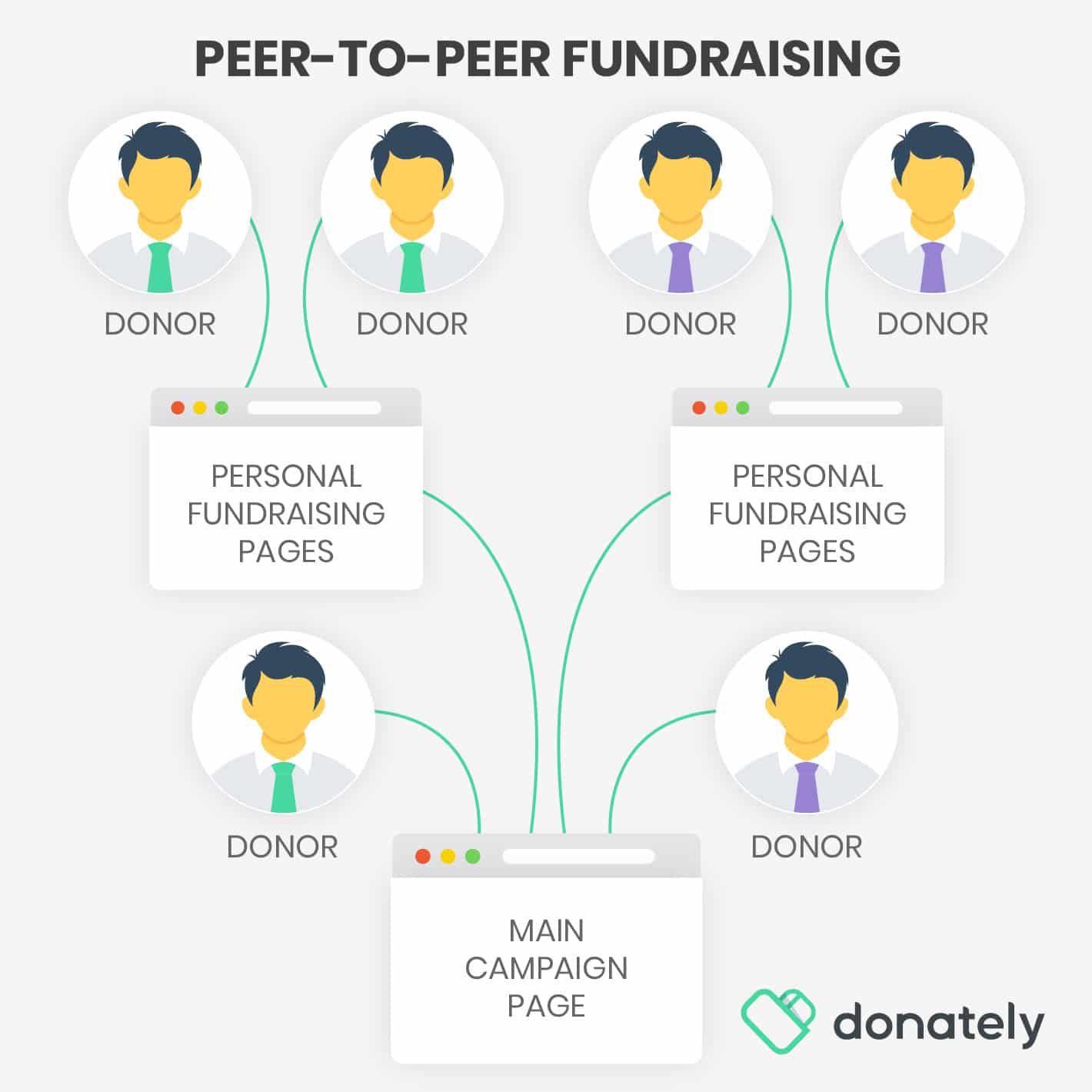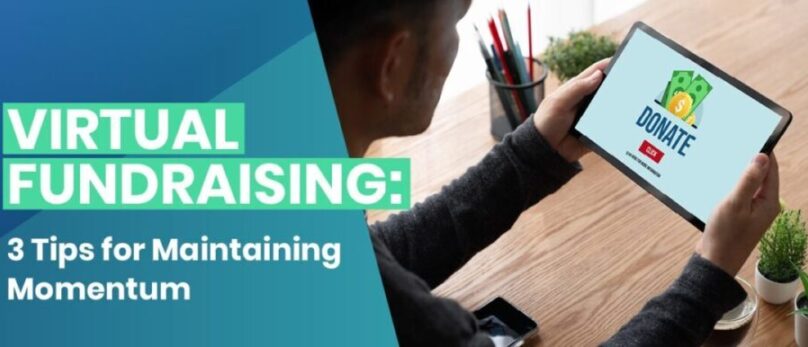Technology has revolutionized the way supporters interact with nonprofits and other organizations. A well-thought-out online fundraising strategy can rocket your organization toward its goals, whether you’re a school looking to increase revenue or a nonprofit seeking to boost long-lasting donor engagement.
By employing effective virtual fundraising tactics, you can empower your donors and volunteers to contribute to your cause from wherever and whenever they’d like.
When building out your online fundraising strategy, incorporate these three tried-and-true methods:
- Start with the right online fundraising technology.
- Choose engaging virtual fundraising ideas.
- Develop a strategic communication plan.
Online fundraising offers an abundance of flexible and creative opportunities for increasing your nonprofit’s revenue. By building a solid foundation for your virtual efforts, you can set your organization up for long-term growth and progress.
1. Start with the right online fundraising technology.
Equipping your nonprofit with the right fundraising technology is absolutely critical for effective online fundraising. Your software facilitates the giving process, making it more convenient for both your staff and donors.
Prioritize features that will provide a positive user experience for your supporters. You should also be able to track your campaigns, use metrics to identify strengths and obstacles, and adjust your strategy for greater success in the future.
To start crafting your nonprofit’s online fundraising plan, look into these three primary platforms for a promising starting point:
Online donation tool
In today’s digital world, having the ability to collect donations online is crucial to your nonprofit’s success. An online donation platform handles the entire virtual giving process, allowing your supporters to easily contribute on the go or in the comfort of their own homes.
To choose the right donation platform for your organization, keep an eye out for these core functions:
- Customizable fields. Find a provider that enables you to fully customize the types of fields on your donation form. This way, you can ensure that you can gather all of the detailed information you need from supporters. According to Donately’s guide to online donation tools, custom fields for suggested giving amounts and other donor details are essential features for your page.
- Customize visual elements. In addition to customizing the fields, you should have the ability to visually represent your mission on your donation page. For instance, you can display your logo and colors or include a compelling banner image that showcases what your nonprofit is all about. Look for providers that will also permit you to adjust the form’s code for more advanced customizations.
- Embed the form into your website. You should have the option to directly add your donation form to your site, rather than redirecting prospects to a third-party platform. Donors will be much more likely to give if you can assure them that their gifts will end up in the right place.
- Ensure your form is mobile-friendly. Smartphones have been increasingly popular ways for people to go online and connect with others around the world. Make sure that your donation page can be just as accessible on mobile devices as it is on computers so that your supporters will be able to contribute at their convenience.
- Make it easy for donors to set up recurring gifts. Encourage your donors to opt into a longer, more consistent engagement with your nonprofit through a recurring gift program. This could be something as simple as a checkbox beside the gift amount field. Once your supporters sign up with their preferred payment method, be sure you have an automatic billing system in place to take care of everything from there.
Remember, your online donation page will be the face of your fundraising campaigns. Select a platform that will expand your organization’s ability to connect with potential donors and encourage them to follow through with their interest in contributing to your cause.
Registration software
When it comes to registering supporters for events, volunteer opportunities, conferences, and workshops, effective registration software can streamline the process. 90% of prospective participants prefer registering online, so having an easily navigable and convenient virtual registration process can increase the likelihood that they’ll get involved.
With registration tools, you can accurately predict attendance for events and activities and plan accordingly. A comprehensive platform will allow you to:
- Gather the exact information you need. Customization options will help you collect relevant data from participants, from their preferred contact information to payment details. This data can prove crucial to making informed plans and preparations in advance.
- Securely collect payments. Your registration software should have security features in place to eliminate any risks of compromising participants’ financial information. That way, your supporters can enthusiastically get involved without having to worry about the safety of their data.
- Automatically bill supporters. Incorporate custom payment plans into your registration process so that attendees can pay according to their desired schedule. At the same time, this recurring billing system can provide a reliable cash flow for your organization.
Optimize your registration process with these features to elevate your attendance numbers and encourage more consistent involvement from your supporters moving forward.
Donor management system
Comprehensive donor management software is fundamental to organizing and understanding your donor data. By collecting the right data for your nonprofit’s goals, you’ll be able to glean productive insights into your current fundraising efforts and tailor your communications to your supporters’ unique needs and preferences.
Maximize the potential of your donor data and make sure your database can store information such as:
- Past donations. What is their giving history with your nonprofit? What amount do they tend to give, and how frequently?
- Contact information and preferences. What’s the best way to contact each supporter? Do they prefer email, text, phone call, or direct mail?
- Employment information. Where do they work? According to Double the Donation’s rundown on corporate giving programs, many companies offer volunteer grants or matching gifts to nonprofits that their employees support.
- Reasons for support. Why are they invested in your cause? What other opportunities can you encourage them to get involved in?
Your donor management system should seamlessly incorporate the data you collect from registrations and donations. This will streamline your analytic and reporting processes, save time otherwise spent on manual data entry, and allow you to understand your nonprofit’s relationships with donors much more deeply.
2. Choose engaging virtual fundraising ideas.
As people grow more and more familiar with connecting through technology, virtual events and campaigns have become a staple for all types of nonprofits.
You have plenty of campaign options to choose from that allow you to interact with donors online. Two popular options for engaging your supporters are peer-to-peer campaigns and text-to-donate fundraisers.
Peer-to-peer fundraiser
Promote deeper involvement from your most passionate supporters with a peer-to-peer (P2P) campaign. Using a P2P platform, design a main campaign page featuring your nonprofit’s mission. Then, recruit enthusiastic contributors from your constituent database and empower them to take the lead on fundraising efforts!
Your volunteers can personalize their own campaign pages and share them on social media, spreading awareness of your shared cause to friends and family members. Social fundraising has been growing rapidly over the past few years, so it’s an avenue you don’t want to overlook.

These supporter-powered campaigns are both easy to run and typically successful due to:
- Social proof. This idea refers to people’s tendency to follow the actions of others. People will be more eager to engage with your cause if someone they know is advocating for it.
- Increased reach. Your supporters already have an established network of friends, family, and acquaintances. Many of them are likely to share similar interests or values, so your mission will have a greater chance of resonating with them.
- A deeper appreciation for your work. By taking on some fundraising responsibilities, your supporters can recognize just how much work goes into raising money for your cause. This can naturally lead them to feel more invested and attached to your nonprofit’s initiatives.
Enlisting your current supporters can be immensely valuable for multiplying your nonprofit’s fundraising efforts and helping you reach new heights with funding. A peer-to-peer campaign can be a wonderful supplement to your existing supporter outreach and engagement efforts.
Text-to-Donate
In 2021, over half of nonprofit website traffic (54%) came from users on mobile devices. For your next engagement efforts, meet your potential donors where they frequent most with a text-to-donate fundraising campaign.
For a successful campaign, follow these steps:
- Create a mobile-responsive giving page.
- Select a mobile giving provider to acquire a unique phone number and keyword for your organization.
- Share your number and keyword with supporters, encouraging donations.
- When supporters text the keyword to your organization’s number, they’ll receive a link.
- The link will send them to your mobile-responsive donation page, where they can securely submit their donations.
This type of campaign prioritizes convenience for your prospective donors, allowing them the option to get involved immediately, even if they’re not sitting in front of a computer.
Furthermore, you can combine text-to-donate fundraising with other virtual events and campaigns to maximize revenue. You can take advantage of text messaging as a method of registration, or even promote your text-to-donate campaign at virtual events themselves.
3. Develop a strategic communication plan.
To connect more deeply with your donors online, it’s important to be thoughtful and deliberate in your communications. Use key platforms such as social media, text, and email to maintain regular contact.
However, to optimize your time and resources, you’ll need to conduct your outreach strategically. To accomplish this, apply these best practices:
- Segment supporters to create personalized outreach. Use your donor database to categorize your supporters into relevant groups. By tailoring your messages to each group, you can ensure that the right messages reach the right audiences. For instance, you can devote more focus to proactively marketing an upcoming fundraising event to those who’ve attended similar ones in the past.
- Apply consistent branding. Throughout all of your platforms, keep your branding consistent and recognizable. Your colors, logo, and core messages should be similar in all of your outreach efforts so that your audience can always be certain that they’re hearing directly from you.
- Use a multichannel communication strategy. Once you’ve segmented your supporters for personalized messaging, don’t forget to engage with them on multiple channels. If you reach them on their preferred platform, they’ll be more receptive to what you’re trying to communicate. For many, checking emails is a daily task, so email outreach can be a productive way to get in front of potential donors.
As you continue to spread the word about your cause, keep tabs on engagement indicators to measure your success. You can take note of metrics such as social media likes and email open rates. By collecting this information, you can drive future growth by determining how to further optimize your communication strategy.
Technology offers a bounty of virtual tools and opportunities to promote engagement from your supporters and potential donors. With widespread access to phones and computers, your prospects are just a click or a tap away from interacting with your organization.
All you need to do is make sure that your fundraising and communication efforts maximize your tremendous online potential.

Author: Jacob Spencer
Jacob is Customer Success Manager for Donately.
“I strive to make every step of our customer journey as enjoyable as possible. My goal is to turn everyone that trusts Donately into a raving fan! Raising funds can be daunting, but we know that with the right tools, it can and should be easy.”


















